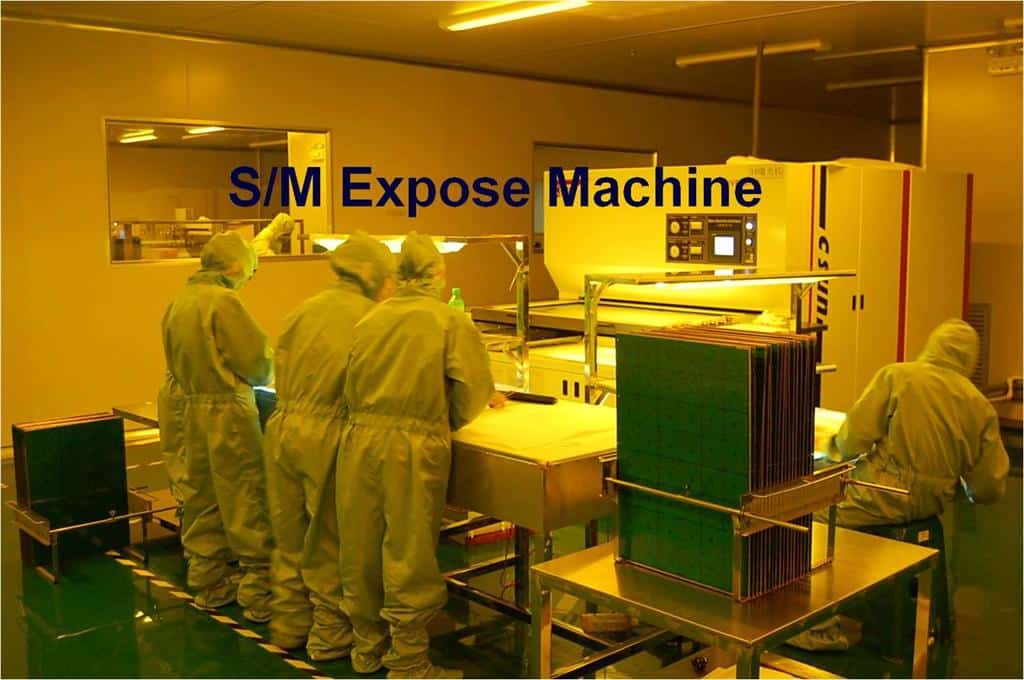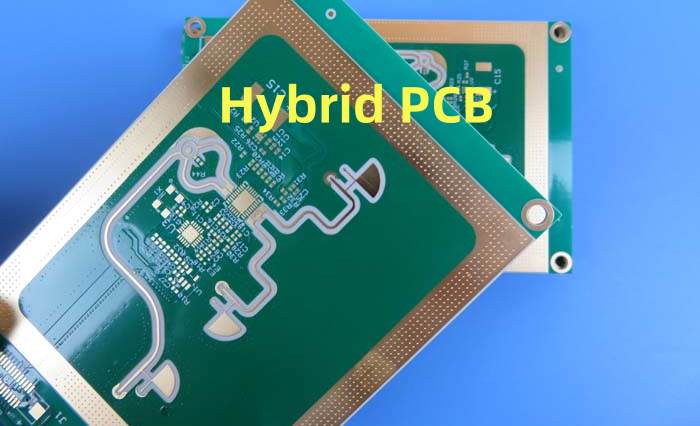The printed circuit board (PCB) is the foundation of modern electronics. As electronic devices become smaller, more powerful and more complex, the demands on PCBs continue to increase. This has led to innovations in PCB materials and manufacturing processes. One exciting development is the emergence of hybrid PCB materials that combine the benefits of different material types into a single board.
What are Hybrid PCB Materials?
Hybrid PCB materials integrate different material types into a single circuit board. This allows the board to have enhanced properties compared to a board made from a single material.
Some examples of hybrid PCB materials include:
- Metal-core PCBs with dielectric polymer coatings
- Ceramic-filled epoxy composites
- Glass fabric reinforced epoxy laminates
- Carbon fiber reinforced plastic (CFRP) and glass fiber reinforced plastic (GFRP)
The key benefit of hybrid PCB materials is the ability to tailor the properties of the board to meet the needs of a particular application. For example, metal-core PCBs provide excellent thermal performance while the polymer coating offers electrical insulation.
Benefits of Hybrid PCB Materials

There are several important benefits that hybrid PCB materials offer compared to traditional single-material boards:
Enhanced Mechanical Properties
Reinforcing epoxy resin with strong fibers like glass, carbon, or aramid can significantly enhance the mechanical characteristics of the board. This includes improved dimensional stability, stiffness, strength, and fracture toughness. The fiber reinforcement provides boards that resist warping and withstand shock, vibration, and flexing forces better.
Thermal Management
By incorporating thermally conductive materials like metals or ceramics, hybrid PCBs can have excellent thermal conductivity and heat dissipation ability. This allows them to manage heat from high power electronics and maintain stable operating temperatures. Metal-core PCBs are especially effective for thermal management applications.
Reduced Weight
Many high performance engineering materials that make up hybrid PCBs like carbon fiber or ceramic have lower densities than traditional PCB materials. This allows hybrid boards to be lightweight while still providing enhanced mechanical and thermal characteristics. Weight reduction is important for many aerospace, automotive and consumer electronics applications.
Design Flexibility
The diversity of material properties attainable with hybrid PCB technology gives designers more flexibility. Different areas of the board can utilize the most suitable materials for specific functions, connectors or components. This optimizes the board’s overall performance.
Environmental Resistance
Hybrid PCB materials provide excellent resistance to high temperatures, chemical exposure, corrosion, UV radiation and moisture absorption. This allows them to withstand harsh operating environments better than traditional FR-4 boards. Their enhanced durability supports reliability and long service life.
Applications of Hybrid PCBs
The unique material properties of hybrid PCBs make them well suited for many demanding applications:
Aerospace & Defense
Hybrid PCBs with carbon fiber or ceramic reinforcement are used extensively in guided missiles, radars, avionics systems and other aerospace electronics. Their light weight, thermal conductivity and mechanical strength support reliable performance in aircraft and spacecraft.
Automotive Electronics
Hybrid PCBs allow automotive electronics to withstand high temperatures and vibration. Composite boards provide the environmental resistance needed under-hood while metal core PCBs manage heat in LED headlights and power control units.
Medical Electronics
Advanced medical imaging systems and patient monitoring equipment utilize hybrid PCBs. Their resistance to sterilizing chemicals and stable electrical performance supports medical safety and accuracy.
Consumer Electronics
Laptops, cell phones, tablets, and gaming systems all benefit from the lightweight, low-profile and thermal management abilities of hybrid PCB materials. Their enhanced durability also improves consumer product reliability.
High Temperature Electronics
Oil drilling sensors, power plant controls and other electronics used in very high temperature environments depend on hybrid PCBs. Ceramic-filled boards in particular provide the extreme temperature capability needed.
5G Infrastructure
The high frequency antennas and semiconductors within 5G systems require advanced PCB materials. The signal integrity and stable electrical performance of hybrid PCBs will support the performance demands of 5G networks.
Hybrid PCB Manufacturing Processes

Extracting maximum benefit from hybrid PCB materials requires specialized fabrication processes attuned to each material’s properties. Some key processes include:
Laser Drilling
Lasers accurately drill small diameter holes through stacked hybrid PCB layers to form conductive vias. This is crucial for creating dense interconnects in multilayer boards.
Photolithography
Light-sensitive photoresist coatings and ultraviolet light exposure enables the precise etching and plating of circuitry patterns onto hybrid material boards. Maintaining process cleanliness is vital.
Layer Alignment and Bonding
The multiple layers that make up multilayer hybrid PCBs must be precisely aligned and tightly bonded to ensure proper vertical interconnects. This requires advanced lamination or thermal diffusion bonding processes.
Surface Finishes
Applying solder masks and metallic platings like immersion silver and immersion tin coatings provides environmental protection and supports soldering. Specialty finishes may be needed for certain hybrid materials.
Thermal Management
Metal-core boards often utilize thermal vias and backside milling to further enhance heat spreading. The fabrication process must maintain the integrity of thermally conductive materials.
Testing
Thorough electrical, mechanical and environmental testing verifies that completed hybrid PCBs meet design specifications. This confirms that fabrication processes were performed properly for the material set used.
Opportunities and Challenges for Hybrid PCBs
Hybrid PCB technology presents exciting opportunities but also some challenges:
Performance Improvements
Ongoing materials research and fabrication process advances will further enhance hybrid PCB performance and expand their capabilities. This will open up new applications and electronics innovations.
Design Experience
Engineers need training and experience with hybrid materials to fully utilize their advantages in design. As best practices emerge, the full potential of hybrid PCBs can be realized.
Cost Reduction
While hybrid PCBs outperform traditional boards, the materials and processes can increase costs. More widespread adoption could spur cost reductions through economies of scale and competition.
Material Selection
With the wide range of hybrid material options, selecting the ideal choices for an application requires research and testing. Materials libraries help designers find their best material match.
Supply Chain Development
Specialized raw materials, fabrication equipment, and testing systems must be in place to produce hybrid PCBs. Growth will require continued supply chain development and technical expertise.
Environmental Factors
With growing emphasis on sustainability, factors like recyclability, chemical processing impacts, and material sourcing must be managed. This includes Responsible Minerals sourcing.
The Future of Electronics with Hybrid PCB Materials

Hybrid PCB technology sits at the crossroads of materials science and electronic engineering. Ongoing innovation promises to deliver enhanced hybrid PCB solutions that will become the standard as increasing demands are placed on electronic devices and systems.
Lightweight, high speed, and reliable hybrid PCBs will support continuing improvements in computational power, wireless communication, multimedia capabilities, military technologies and transportation systems. By bringing together the best physical, electrical and thermal characteristics from different material families, hybrid PCBs provide a pathway to support the electronics innovations that will define the future.
FQA
What are the main types of materials used in hybrid PCBs?
The most common materials used in hybrid PCBs include fiber reinforced plastics like FR-4, polyimide, and epoxy, thermally conductive metals like aluminum and copper, and advanced ceramics like aluminum oxide and aluminum nitride.
How are hybrid PCBs manufactured?
Hybrid PCBs use many of the same processes as traditional PCBs like photolithography, drilling, and lamination. Special steps like laser drilling, thermal diffusion bonding, and surface finishes tailored to the materials are also employed.
What are some key benefits of using hybrid vs traditional PCBs?
Key benefits include improved thermal management, reduced weight, enhanced mechanical characteristics, design flexibility, and resistance to demanding operating environments. This supports superior electronics performance.
What industries make the most use of hybrid PCB technology?
Aerospace and defense, automotive electronics, telecommunications, medical electronics, and consumer electronics are leading adopters of hybrid PCB technology.
What ongoing innovations promise to expand the capabilities of hybrid PCBs?
Continued materials research to optimize properties, improved fabrication processes, design tools to assist engineers, cost reduction through scaling, and responsible supply chain development will all help advance hybrid PCB technology.





